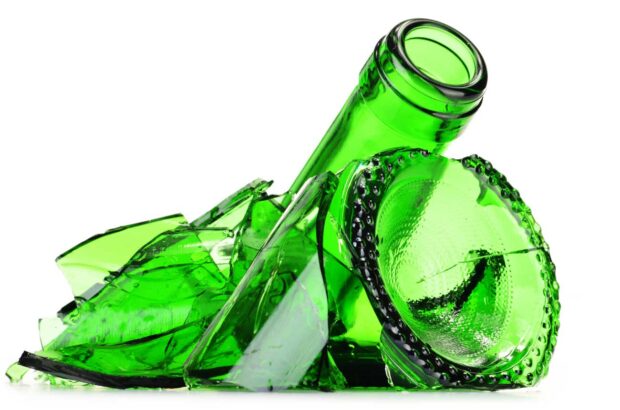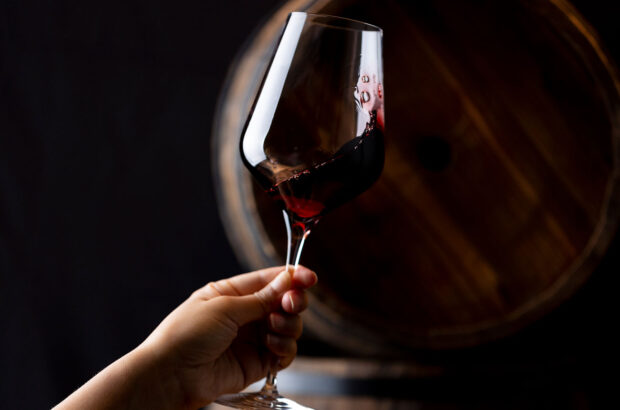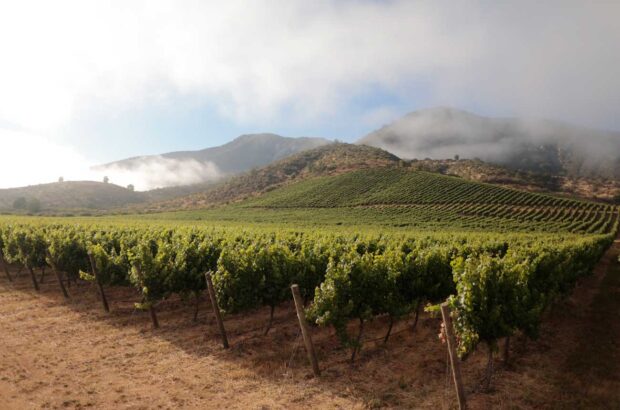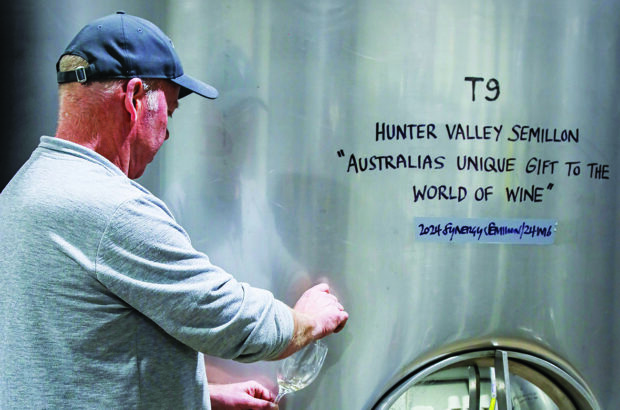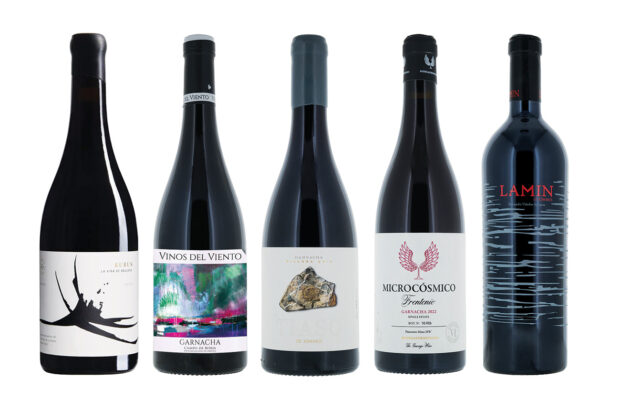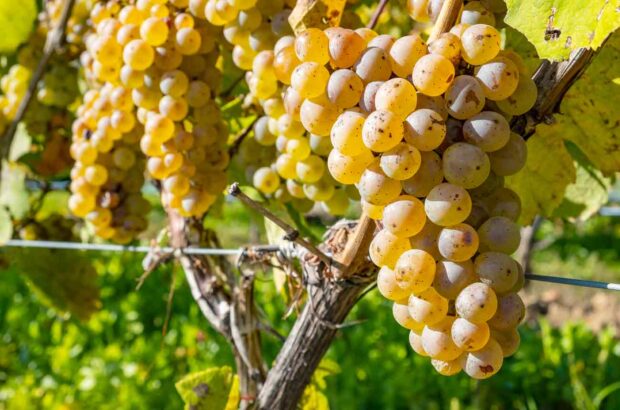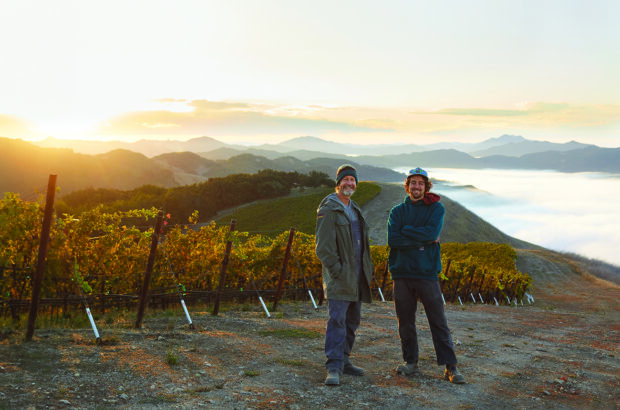Opus One: 20 years old
- Their concept was to create an American first growth
- The idea was bold and brilliant
- In France, the press screamed treachery
- Opus One set new standards in winemaking and viticulture
There aren’t many wineries in California that could organise a spectacular 20th-birthday bash for 650 guests as well as receive congratulatory messages from both the US president and the French ambassador. In fact there’s only one. Opus One.
Typically, the celebrations late last year at Opus’ Oakville winery were on a grand scale. They included a black-tie dinner for nearly 250, with a tasting of every Opus vintage. Bob Mondavi and Baroness Philippine de Rothschild were, of course, present as hosts, while guests included celebrities and press from around the world.
Worldwide celebrations
However, the celebrations didn’t stop in California. In 1999, a series of tastings took place in major cities. In New York, at yet another gala banquet two Opus collections were auctioned off for charity. The first comprised 18 double magnums, the second 18 impériales. The London event in November also featured a full vertical tasting lead by Tim Mondavi and Baroness Philippine de Rothschild. Finally, this June, the partners will host a tasting and dinner in Tokyo to conclude yet another landmark year in the extraordinary history of Opus One.
Opus history
It hasn’t all been plain sailing for Opus. Indeed, back in the late 1970s, the success of this venture involving the Mouton-Rothschild and Mondavi wine empires seemed anything but a foregone conclusion. It wasn’t just that it had never been done before, California wine was not yet recognised as it is today. In France, the press screamed treachery, accusing Baron de Rothschild of selling out on Bordeaux. Even Mondavi’s own family initially resisted the idea.
The plan was first discussed when Baron Philippe de Rothschild and Bob Mondavi met in 1973. Then, five years later, they met again before hatching the blueprint at Mouton-Rothschild in just two hours flat. Their concept was to create an American first growth. It would be an estate wine based, primarily, on Cabernet Sauvignon. It would have its own winery and Napa Valley vineyards with everything owned 50:50.
The idea was bold and brilliant and the publicity that followed the announcement was predictably stupendous. But bold ideas can go badly awry if the human chemistry fails to ignite. Fortunately, the two lead men, despite coming from quite different backgrounds, were in many ways very similar. Both were powerfully ambitious pioneers and visionaries who were committed to the goal of creating a world-class California cru.
Some time after the debut 1979 vintage, the name ‘Opus One’, with its musical theme, gravitas and Latin origins was finally adopted. Meanwhile, the speculation that surrounded this hitherto unnamed, untasted wine mounted. Especially when Michael Broadbent sold a case of the 1979 at the 1981 Napa Valley Auction for a record $24,000.
Then, in 1984, the first two vintages were released. Following tastings in San Francisco and New York, one headline simply read: ‘Opus Won.’ By the following year, Opus was widely recognised as the USA’s number one, ultra-premium wine. What’s more, it was selling at $50 a bottle. These days it’s more like $125.
Opus today
Since then, Opus’ style and quality have evolved significantly, while production has risen to about 30,000 cases a year. Speaking in London last November, Tim Mondavi attributed the stylistic changes to a number of factors, including his two winemaking partnerships of Mouton’s Lucien Sionneau and Patrick Leon, who took over in 1987. An equally important factor is that, by 1991, Opus had its own Oakville winery, described by Tim Mondavi as, ‘a winemaker’s dream’. Naturally, it cost a fortune ($26.5 million), however, Scott Johnson’s design is a stunning architectural statement. It was completed with the considerable involvement of Baroness Philippine de Rothschild both before and after the death of her father in 1988. ‘I threw myself into it because, in many ways, Opus was more mine than Mouton,’ she revealed.
Meanwhile, Opus also acquired 42 densely planted hectares, mainly comprised of Cabernet Sauvignon. But now there are a handful of support acts including Cabernet Franc, Merlot, Petit Verdot and Malbec, which are adding greater complexity to the blend. The winery and vineyard enabled Opus to move up yet another notch or two in quality. As a result, the post-1991 vintages are showing more weight, richness and complexity than the leaner wines of the early 1980s.
Yet, despite the best efforts by both families, a minority of cynics have held the belief that Opus was never intended as anything more than a massive PR exercise. Others have claimed that the wines are hyped, overpriced and over-rated. Baroness Philippine de Rothschild rejected these accusations: ‘Opus is a great wine and a genuine asset to both families. It was never a gimmick.’ Tim Mondavi supported her: ‘Just look at the winery. You don’t create a home like that for Opus if you’re not serious about the stature of the wine.’
As for the future, ‘Opus will continue improving the quality and making the best wine we can’, said Mondavi, who believes the best is yet to come. There are no plans, however, to increase production or create an Opus One white.
Opus success
Of course, a 20th-birthday party offers a wonderful opportunity to look back at Opus’ many successes. Apart from achieving its original aim, it has also done wonders for the reputation of California wine. In so doing, it set new standards in winemaking and viticulture which have undoubtedly inspired others. One could argue that the relationship has benefited Mondavi more than Mouton, but it’s a small point. ‘Both families are very happy that we have accomplished everything we dreamed about 20 years ago,’ said Tim Mondavi.
So what has been the secret of this partnership’s success? ‘There are many reasons why it has worked so well,’ said Mondavi. ‘But perhaps two stand out. The first is the way we have all adhered to the goal created by Baron Philippe and my father. The second is the genuine affection and respect between the two families. Without those, we wouldn’t be here today.’



